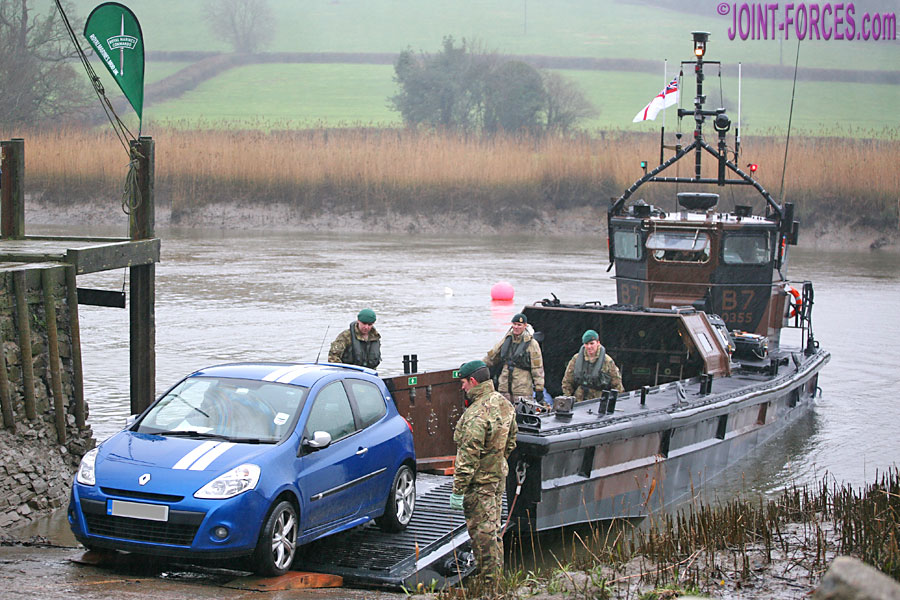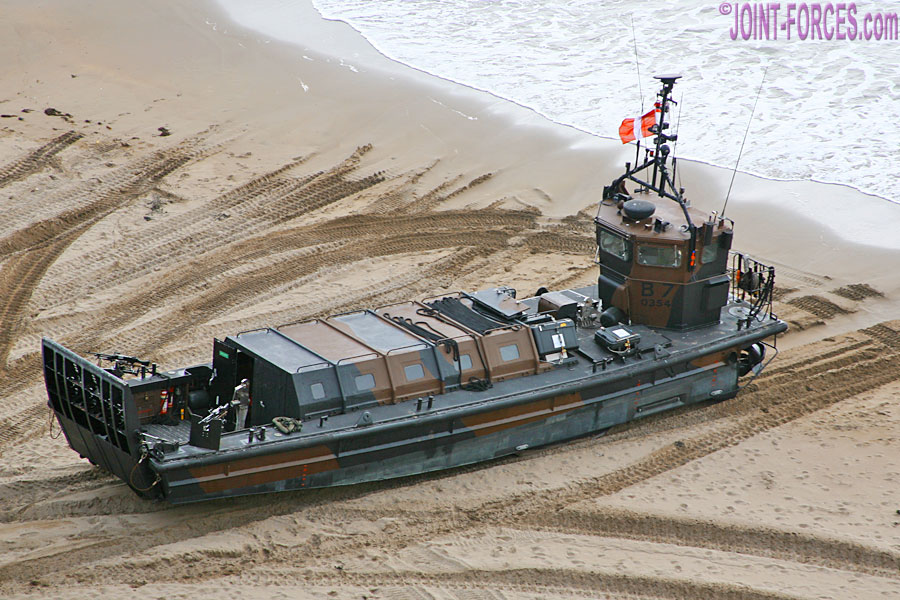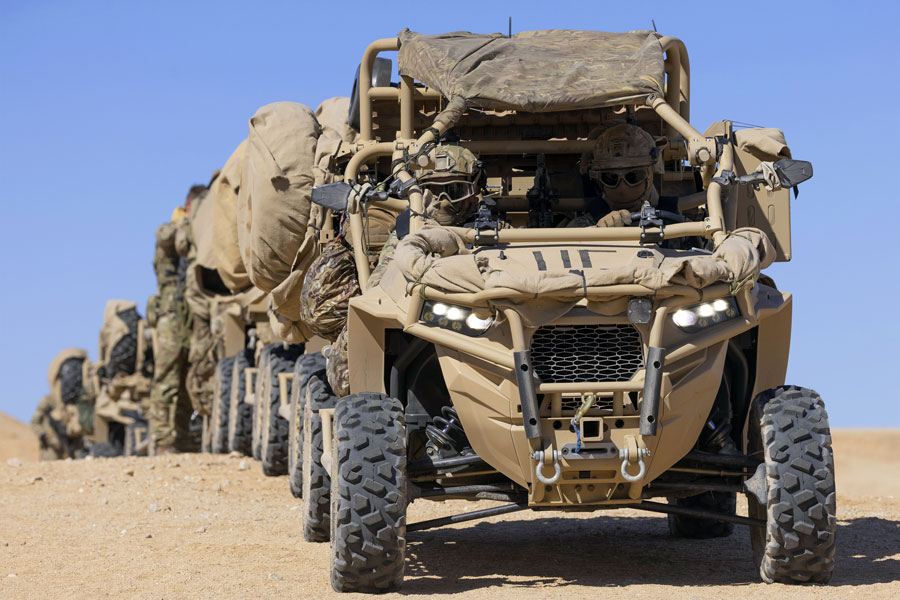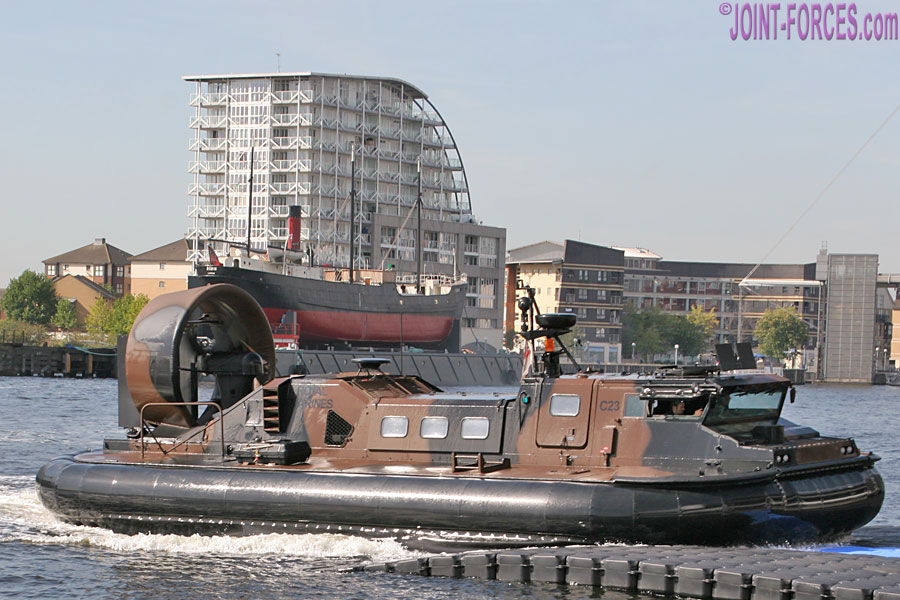
Royal Marines using an LCVP Mk.5 to recover civilian vehicles isolated by a landslide in Cornwall in 2014 [©Bob Morrison]
The UK MoD has issued an update to its Novel Amphibious Craft competition details by adding a document with Frequently Asked Questions.
~
News Release, Whitehall, 28 November 2022: This competition will fund promising technologies that will help to develop a Novel Amphibious Craft fit for the threats of the 21st Century. Below is a list of Frequently Asked Questions (FAQs) about this competition, grouped into four categories.
1. Submitting to DASA
- Q: Who will assess proposals?
- A: Assessors will be a mixture of staff from Dstl, the end user community, and the Naval Design Partnership (NDP) with appropriate Non-Disclosure Agreements (NDAs) in place.
- Q: Can I submit multiple proposals?
- A: Yes, providing you have capacity to support all proposals if they were all funded.
- Q: Can I submit a joint proposal with other innovators if our technology would be best served as part of a collaboration
- A: DASA is keen for innovators to collaborate. Sign up to collaboration survey, which can be found in competition document. In addition, you can also join the Ideas Marketplace to find collaboration opportunities.
- Q: Is collaboration part of the assessment?
- A: No.
- Q: We are considering applying to both Theme 1 and Theme 2. Our Theme 2 proposal might make use of elements of our Theme 1 proposal; are you comfortable if there was a level of collaboration between bids?
- A: This is only acceptable as long as any one proposal can be delivered independently. Multiple proposals should not duplicate effort and must be able to be separated out and scored independently.

2. The Vessel
- Q: Would the competition allow the separation between personnel and equipment?
- A: Commando Force doctrine is to never separate operators from their kit. Mission failure could occur if the vehicles reached shore, but personnel couldn’t (or vice versa).
- Q: Regarding signature reduction, what are the requirements for different stages throughout the operation? Can signatures change part way through the operation? Is there a particular range at which signature management becomes important?
- A: This challenge is driven by sensor technology, which evolves rapidly. We take a holistic approach to reducing signatures; we seek technology that is ambitious and innovative to provide effective capability against threats current and future.
- Q: Will you consider a proposal which achieves the operational requirement with more than one craft?
- A: Yes.
- Q: Can I submit a proposal for an amphibious vehicle that can drive up a beach and in-land?
- A: If it does not allow for transport of equipment or medium load vehicles, then it is not in scope for this competition. You should discuss the idea with your Innovation Partner and consider submitting to the DASA Open Call.
- Q: Should I design my proposal with a particular threat in mind?
- A: No.
- Q: What is the typical weight of a Royal Marines Commando?
- A: 150 kilogrammes.
- Q: What is the composition of the crew?
- A: Crews are composed of 4 personnel: 2 drivers, 1 Coxon, and 1 Load Master. If your proposal suggests we need a different number, this will be considered in conjunction with other features of your idea.
- Q: Are the Defence Maritime Regulations (DMR) flexible for this craft?
- A: For the time being, no. If, through the work you undertake, you generate evidence which suggests a certain policy can safely be changed, then we can challenge the regulations.
- Q: Are uncrewed vehicles of interest?
- A: Depending on the mission and level of autonomy, we are considering optionally crewed platforms.
- Q: Would you consider craft with the ability to go semi-submersible?
- A: Yes.
- Q: Will hovercraft be considered?
- A: While hovercraft may have many limitations (particularly concerning acoustic/visual/radar signature management) proposals involving a hovercraft will be considered.
- Q: For Themes 1a-1c proposals (TRL 6) do you require a physical demonstration?
- A: Yes.
- Q: For Theme 2 proposals (TRL 4), are you looking for a practical demonstration or would computer modelling suffice?
- A: Proposals for Theme 2 can be scaled physical models or virtual models of a design.
- Q: Would you like the option to launch the inflatable boats at sea?
- A: Yes
- Q: Is the 2 metre air draft constraint still valid when the vehicle is in motion?
- A: This constraint relates to keeping radio frequency signature at acceptable levels, and thus the upper limit for air draft is always 2 metres over the wave. If your proposal cannot achieve this at all times, it will still be considered, but this will be noted by the assessors as a drawback.
- Q: Does the 2 metre maximum air draft include an antenna?
- A: No
- Q: Can the roof of the medium-lift vehicle be collapsed to reduce height?
- A: Yes.
3. The Environment and External Factors
- Q: Is there an aspiration to operate at speed in sea states higher than sea state 2?
- A: For this competition we set the threshold requirements to be 25 knots at sea state 2. We chose not to put an upper limit on these criteria as this might put an artificial ceiling on how ambitious proposals should be. We want industry to be as innovative as possible.
- Q: Why aren’t wind states or gusts mentioned? Will these be added?
- A: Not for this competition. If we add too many restrictions, we risk forcing innovators down a specific route. We want people to think innovatively and generate novel ideas.
- Q: Is there a definition or description of the specific type(s) of mud/sand/surface we should consider?
- A: We recommend you communicate where the limitations are. The broader the range of surfaces your craft can handle, the better, but there comes a point where we might have to compromise. We do not expect one type of technology to be able to handle every beach type.
- Q: Should our craft be designed to function on a surface with specific mechanical properties?
- A: We can’t provide any further guidance on the properties of the coast access point. However, your proposal should outline major limitations of your solution.

[Crown Copyright / OGL : LPhot Joe Cater]
4. Contracting and Future Work
- Q: Is this competition to help to develop the requirements for the Commando Insertion Craft (CIC)?
- A: This competition is not just about the CIC. The Commando Force is going through transformation, which involves the renewal of the entire surface manoeuvre fleet. Some ideas might not suit CIC but would still be of interest to this competition.
- Q: It would be useful to do model tank testing for my Theme 2 proposal, but this might be prohibitively expensive. Is this a problem?
- A: If testing your technology would add significant cost, your proposal could include break points for additional funded options ahead of a demonstration. If you believe that your proposal offers genuine value for money and the assessors agree, then it stands a good chance of securing funding.
- Q: Do we need to provide as many clear routes to exploitation as possible?
- A: Assessors appreciate suppliers outlining different exploitation routes, but don’t focus too heavily on it.
- Q: Under the contract, there is no licensing to DASA and IP flow backs aren’t part of the competition; how will they be handled?
- A: You will need to identify what is your background IP and state this explicitly in your proposal.
- Q: If successful, when will the funds become available?
- A: Your proposal should include different payment milestones at appropriate points in the contract.
- Q: Are you interested in hearing about potential export opportunities?
- A: Yes.
~
¤ See also:~ UK MoD Novel Amphibious Craft Competition Launched




















